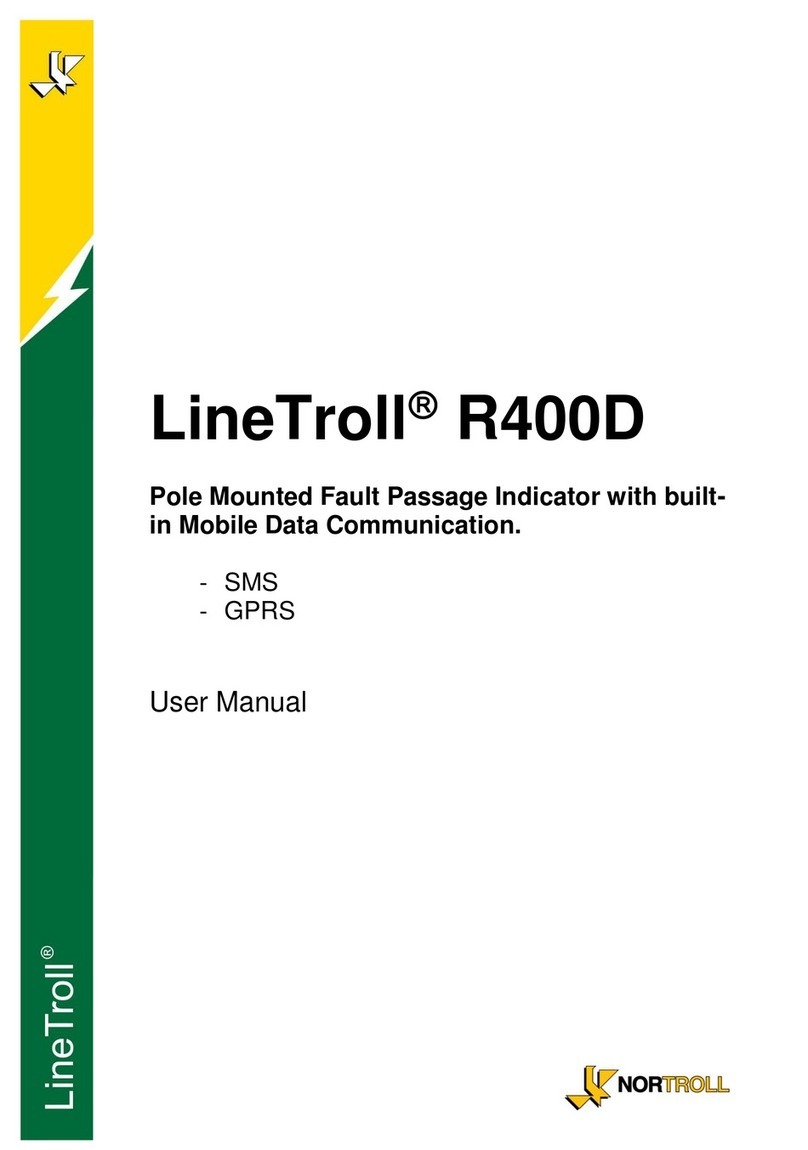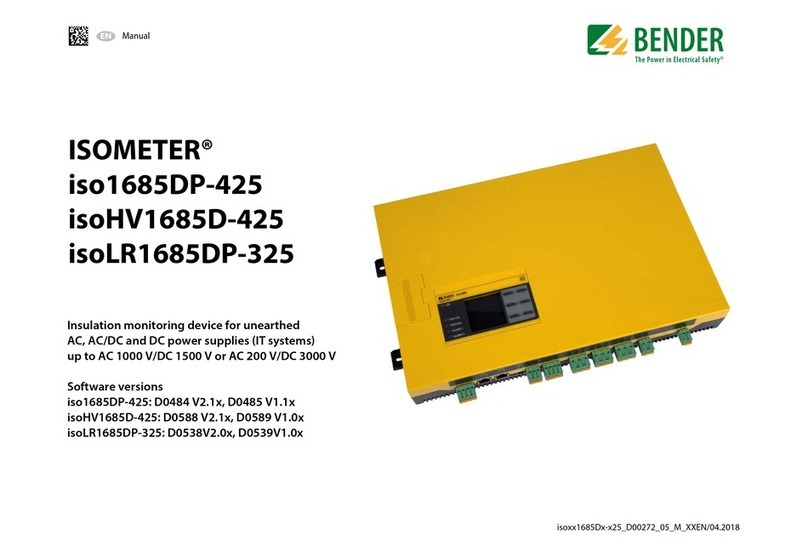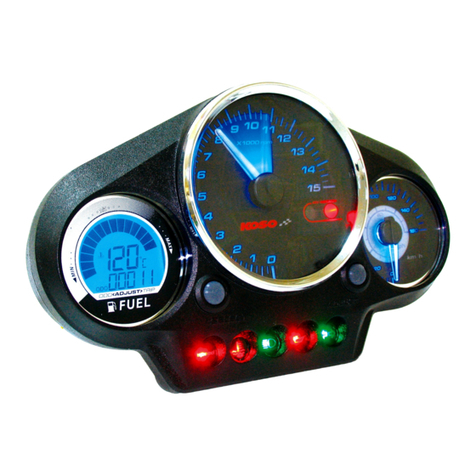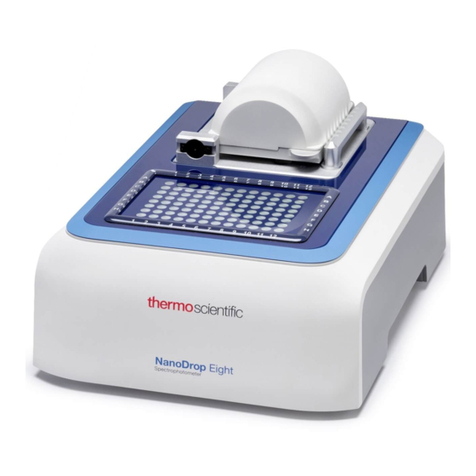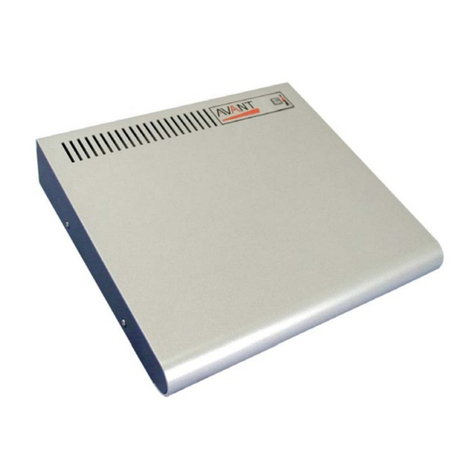Nortroll LineTroll 110Tmr User manual

06.02.2014
LineTroll110Tµr
User Manual

LineTro110Tµr User Guide June 2011Page 2 of 16
TABLE OF CONTENTS
1. LINETROLL 110TµR OVERVIEW....................................................................... 3
2. FUNCTIONAL DESCRIPTION............................................................................. 3
2.1. Sensors......................................................................................................................... 4
2.2. Activation criteria....................................................................................................... 4
2.3. Indication .................................................................................................................... 4
2.4. Reset criteria............................................................................................................... 5
2.5. Battery lifetime / maintenance .................................................................................. 5
2.6. Low battery warning.................................................................................................. 5
2.7. Low battery warning reset......................................................................................... 5
2.8. Fault sensitivity........................................................................................................... 5
3. APPLICATION..................................................................................................... 6
4. APPLICATION NOTES........................................................................................ 7
4.1. Energising a healthy line............................................................................................ 7
4.2. Connecting a faulty line while the indicator is activated........................................ 7
4.3. Transient faults........................................................................................................... 8
4.4. Fused lines................................................................................................................... 8
4.5. Multiple faults............................................................................................................. 8
4.6. Capacitive discharges................................................................................................. 9
4.7. PROGRAMMING.................................................................................................... 10
5. MAINTENANCE................................................................................................. 11
5.1. Battery replacement................................................................................................. 11
5.2. Reset battery monitoring......................................................................................... 11
6. INDICATOR HOUSING...................................................................................... 11
7. TECHNICAL SPECIFICATIONS....................................................................... 12
8. DIMENSIONS .................................................................................................... 13
9. MOUNTING........................................................................................................ 13
10. FLASHING SEQUENCES:................................................................................. 15
Terms:
Energised line: Voltage or current present
De-energised line: Voltage or current not present
LT= LineTroll
Ordering info:
Prod.no.: Product:
04-1300-01: LT-110Tµr (with radio & new line-clamp)

LineTroll 110E/110Eµr User Guide September 2009 Page 3 of 16
1. LINETROLL 110Tµr
OVERVIEW
The LINETROLL 110Tris a line
mounted fault indicator for local and remote
indication.
The LINETROLL 110Trhas an
integrated radio that can communicate with a
pole-mounted Nortroll Collector device
(CmT 115C or others). The Collector can be
interfaced to a SCADA-RTU or a
communication device by means of dry relay
contacts or serial-port for remote indication
of faults..
The LT 110Tr is a single phase unit,
however they are normally used in groups of
3 to fully cover the different fault
configurations which can occur. Deliveries
come as a kit of 3 units to each package.
The LT 110Tr Fault Passage Indicator;
detects down-streams faults in the OH-
distribution network. Detectable faults
include short circuit and earth fault, if the
network provides sufficient earth fault
current.
The indicators are placed at strategic
locations along the line, such as after
branching points and sectionalisers. The
indicators mount directly on the high voltage
conductor.
Live line mounting is easily and rapidly
done with a shotgun type Hot-Stick.
Upon fault sensing, all indicators installed in
the faulty phase(s) between the feeding
substation and the fault will operate. The
indicators placed behind the fault or in the
non-damaged phase(s) remain idle.
Upon detecting a fault on the line, indication
is by means of an intermittent LED- flash (1
super intensive red LED’s for a permanent
fault and 1 regular Green LED for transient
faults).
The LED-flash can be seen within 100-200
metres distance. The lens of the indicator
allows for uniform 360 degrees monitoring.
LINETROLL 110Er provides fast fault
location through remote indication, enabling
reduction in outage times. This represents
enhanced service to the customer thereby
improving the utility image.
Another important aspect of using fault
indicators is that unnecessary operations of
circuit breakers and sectionalisers to locate
faults can be avoided. In this way the
indicators can help to reduce wear and tear,
as the reclosing cycle can cause stress to
switchgear.
2.FUNCTIONAL DESCRIPTION
The LINETROLL 110Tr continuously
monitors the line voltage and phase current,
the two sources of information it needs to
operate. The unit is fully self contained, no
external transformers or connections are
required.
During normal line conditions; the indicator
does not flash.
The device is looking for a specific sequence
of line conditions to occur before it starts
indicating locally and remotely. The general
sequence is as follows:
A. The line is energised (voltage or current
present) for at least 5 seconds.
B. The line current increases
instantaneously by a user defined set
value (the step level), or exceeds a user
defined threshold value (if enabled).
C. The line is de-energised. Voltage or
current not present (optional auto reset
when the line is re-energised)
The user can program the criteria for
operation to suit his local requirement by
manipulating a bank of micro-switches
inside the indicator.
Note: Voltage or current present as start
and stop criteria is user programmable.

LineTro110Tµr User Guide June 2011Page 4 of 16
2.1. Sensors
The magnetic field generated by the line
current induces a signal in the indicators
pickup coil. The induced signal is applied to
a di/dt sensor in order to discriminate
between fault current and load current.
The di/dt sensor detects instantaneous
current level increases, as is the case when a
faults occurs.
The trip level of the di/dt sensor can be set to
+500A or +1000 A by means of a switch
bank inside the unit.
A normal variation of the load current will
not activate the LINETROLL 110Tr.
Figure 1: Magnetic field sensor principle.
Figure 2: Electric field sensor principle
The line voltage is detected by means of an
antenna housed inside the indicator.
2.2. Activation criteria
The LINETROLL 110Tr can be easily set
to operate in the wanted mode by altering a
number of switches inside the unit.
In order to avoid activating the indicator due
to magnetising inrush current, it's di/dt
sensor is blocked for 5 sec upon energising
of a line. While the blocking time elapses,
the line current can stabilise so as not to
cause triggering of the di/dt sensor.
A fault duration exceeding 60ms is required
to activate the indicator.
In addition to its di/dt sensor, the
LINETROLL 110Tr incorporates a
common threshold sensor, with threshold
levels of 500A, or 1000A. The threshold
criterion, if enabled, activates the indicator if
a fault current exceeds the selected level.
(Inrush blocking is still active in this mode)
A rapid line current increase followed by a
de-energising of the line within 5 sec will
activate the indicator.
2.3. Indication
The main mode of local indication is 1 super
intensive red LEDs which indicate for
permanent faults.
Secondary indication is a single regular
green LED.
For a transient fault: The green LED
flashes for 24h (no red LED’s flash).
For a permanent fault: The super
intensive red LEDs flash until reset
(timer, auto or manual reset).
* Note: to verify a permanent fault is
present, the red LED indication is delayed
70 sec. See more detailed info in Ch 10
Flashing sequence.

LineTro110Tµr User Guide June 2011Page 5 of 16
2.4. Reset criteria
The indicator can be set to automatically
resets in two different ways:
1) When the line is energised.
The voltage or current sensor detects that
the line is energised and can in turn reset
the indicator after 30 seconds of
continuously energised line
2) Automatic reset by internal timer.
This timer can be set to:
2, 6, 12 or 24 hours
The indicator can also be reset manually at
any time by use of a magnet.
2.5. Battery lifetime / maintenance
A 3.6V, 16.5 Ah Lithium battery powers the
indicator. When idle, the 110Tµr
consumption is a few micro-amps only. This
gives some 7-10 years battery lifetime in
normal service.
When the unit is activated, approximately
4 mA are consumed, giving more than 1500
hours of flashing capacity. The battery is
fitted with a connector for simple
replacement.
Figure 3: Initial battery capacity.
Figure 4: Remaining battery capacity as a
function of years and temperature
2.6. Low battery warning
During the last few months of the battery’s
life, an amber LED with a low flashing
frequency will indicate that less than 20% of
capacity remains and that there is a need for
battery replacement.
The 110Tµr will send a message “Low
battery” to the Collector.
2.7. Low battery warning reset
In the case of battery replacement the battery
capacity monitoring must be reset. See Ch
5.2.
2.8. Fault sensitivity
The indicator’s di/dt sensitivity is limited by
the load current.
See table in Ch. 7. TECHNICAL
SPECIFICATIONS.
The indicator detects short-circuit- as well as
earth-faults provided that the di/dt current
change exceeds the detection level or
absolute threshold level dependent on
programming.

LineTro110Tµr User Guide June 2011Page 6 of 16
3. APPLICATION
The application of LINETROLL 110Tµr
usually requires a preceding line survey so
that the best use of the indicator may be
identified.
For the best economic benefit it is recom-
mended that the indicators are used:
On easily accessibly line points for easy
monitoring of the indicator in case of a
fault, for instance near the road. It is
advisable to take binoculars when
looking for a fault.
Before and after line points difficult to
reach (mountains, woods, etc.) to help
quickly locate the fault.
Next to line branching points, to help
easily locate the damaged branch.
When installing indicators at such
points, the use of indicators in every
branch is recommended in order to
provide complete information in the
event of fault.
Not doing so may cause confusion since
there may be an indication in a branch
due to a non-permanent fault while
another branch without an indicator
installed may be faulty yet remain
unidentified as such.
Near line points with sectionalisers to
rapidly pinpoint and isolate any faults,
and to facilitate rapid reconnection of the
healthy sections.
The LINETROLL-110T/r is suitable on:
66-138kV Sub-Transmission &
Transmission networks.
Radial lines.
Multiple circuit lines (In this case current
reset must be used)
Solidly-earthed-neutral networks.
Resistor grounded and isolated neutral
networks.
If indication of earth-faults is required,
the indicators sensitivity and the
networks residual fault current has to be
taken into account.
On conductors of 5-36 mm diameter.
with special emphasis on:
Areas with unpredictable electro-
magnetic fields caused for example by
parallel lines. Here the indicator can be
used as a better suited complement to the
three-phase fault indicator LineTroll
111K & LineTroll 3100.
Do not use LT110Tµr on:
Ring lines or multiple fed lines.

LineTro110Tµr User Guide June 2011Page 7 of 16
4. APPLICATION NOTES
The aim of this section is to describe how
the LINETROLL 110Tr indicator behaves
for different service situations and network
events.
4.1. Energising a healthy line
As the magnetising inrush current of a line
can be very high, the indicator is provided
with 5 seconds inrush blocking which
prevents it from being activated until after
the line current has stabilised. Once the
blocking time has elapsed, the indicator is
enabled for fault detection.
See Figure 5.
.
Figure 5: Criterion of the blocking time.
a) shows the sequence when a fault occurs less
than 5 sec after line has been energised:
No Indication.
If, upon re-energising of a line, the unit is
already indicating due to a previous fault,
the unit will reset if the voltage or current
reset option is enabled. However even in this
case the indicator will flash for 30 seconds
(depending on the programming, see 4.7)
before finally extinguishing. See Figure 6.
Figure 6: Delayed reset of flashing.
4.2. Connecting a faulty line while the
indicator is activated
Closing a breaker onto a fault leads to
another trip almost instantly.
As the activated indicator needs 30 seconds
with the line energised in order to reset, it
will continue indicating.
See Figure 7.
Figure 7: Reclosing upon a faulted line.

LineTro110Tµr User Guide June 2011Page 8 of 16
4.3. Transient faults
Transient faults cleared within the last
automatic reclosing, can be detected by the
green LED. The green LED will flash for 24
hours as extended transient indication.
If a new fault occurs within timeout (24h),
the indicator will reset the green LED and
indicate for the new fault.
4.4. Fused lines
One operation criterion (assuming automatic
voltage reset is enabled) is that, after a fault,
three-phase disconnection of the line has to
be carried out.
If, instead of a three-phase trip, a fuse
operates in one or two phases, then the
voltage of the healthy phase(s) may result in
no indication or a reset of indication.
This is true for indicators placed before a
fuse as well as after it.
When the criterion of automatic voltage
reset is enabled, the LINETROLL-110Tr is
not activated unless the fault causes a three-
phase trip within 5 seconds after the
occurrence of the fault.
If there is only one disconnection within 5
sec, followed by an automatic reclosing
causing a fuse-operation, the indication
starts, but will reset after 30 sec.
If the automatic reset is switched off, the
indicator will continue flashing until it is
reset manually or after the automatic timer
period has elapsed.
4.5. Multiple faults
Multiple faults can sometimes occur.
Defective network components may burn or
break due to the electro-dynamic force of a
fault current and cause a second fault.
Another cause of multiple faults for network
where the neutral is isolated from earth or
earthed via a resistor, is an increase in the
phase to ground voltage on healthy phases
due to an initial earth fault.
The phase to ground voltage may reach up to
1.7 times the nominal voltage, depending on
the total impedance of the earth loop. If there
are any weak points in the line, they may not
withstand such a large voltage increase. This
type of fault may be difficult to find as they
often are non-permanent and only appear in
situations like the ones mentioned here.
Note: In this situation the indicators may
show non-consequent indication.
<5s
Line
I
Indication
24h
Extended transient fault
indication
Green
LED

LineTro110Tµr User Guide June 2011Page 9 of 16
4.6. Capacitive discharges
The LINETROLL-110Tr indicator is not
directional, it therefore detects current
without discriminating direction. In case of
an earth fault, the network capacitive energy
discharges in the fault point. It should be
checked that the capacitive discharge current
downstream of the indicator is below the
preset trip level in order to avoid the
indicator erroneously activating upon earth
faults.
If the total capacitive current exceeds the trip
level, it is advisable to change the trip level
or install the indicators in the branching
points instead of in the main line. The
capacitive discharge of a branching point is
limited by its own capacitance, while in the
main line the capacitive current of all the
branches downstream of the indicator is
added. Underground cables have larger
capacitance than overhead lines. This has to
be taken into account when an overhead line
feeds an underground cable.
The following simplified formula may be
used to estimate the capacitive discharge
current for a line:
Ic = U * La + U * Lc
300 K
Ic = Capacitive current in A
U = Nominal voltage in kV
La = Overhead line length in km
Lc = Cable length in km
K = 10; for oil impregnated cables
5; for PEX cables
3; for PVC cables
In order to avoid that the LINETROLL-
110Tr is activated by an earth fault
downstream of the indicator, the following
criterion has to be met.
Ic < It
where
Ic = capacitive current downstream of
the indicator.
It = Setting of sensitivity (500 or 1000A)
To estimate the capacitive discharge current
at any line point, you have to calculate the
contribution from all the overhead lines and
underground cables lengths beyond that
point only.
Figure 8: Capacitive discharge current calculation
example
Proposed location
for LT 110Tµr

LineTro110Tµr User Guide June 2011Page 10 of 16
4.7. PROGRAMMING
Programming the unit is done via a switch-
bank on the printed circuit board. See fig. 9
The indicator can be programmed to
different current levels for either di/dt-
sensing or threshold sensing.
4.7.1. Status Indication
Red led: Energized line (voltage/current)
Yellow led: Not energized: yellow led.
Switch #
Duration of status indication
1
0
2 min
1
5 min
4.7.2. Di/dt sensing
Switch #
Di/dt & Threshold level
2
3
8
0
0
0
Di/dt = + 500 A
0
1
0
Di/dt = + 1000 A
1
0
0
Threshold = + 500 A
1
1
0
Threshold = + 1000 A
Table 1: Di/dt setting
4.7.3. Start/Stop criteria
Switch #
Start/Stop criteria
4
0
Current > 50A
1
Voltage > 50kV
Table 3: Start/Stop criteria.
4.7.4. Timer reset
Switch #
Timer reset
5
6
0
0
2 hours
0
1
6 hours
1
0
12 hours
1
1
24 hours
Table 4: Timer reset
4.7.5. Auto-Reset
Programming of the automatic indication
reset (AR).If enables reset occurs when the
line has been energised for more than 30 sec
(voltage or current).
Switch
7
Auto reset on return of
voltage/current
0
OFF
1
ON *
Table 5: Auto-Reset
* Note: If Auto-Reset = ON, then a
transient fault will be indicated for 24h by a
single green led.
Note:
To enable new switch-settings, a RESET
of the indicator is required; This can be
achieved via reconnection of the battery
or a magnet at the RESET-spot.
4.7.6. Emote programming
Switch #
Remote programming
8
0
OFF (only local programming)
1
Enables the indicator for
remote programming from a
collector f.ex. CmT-115C.
Table 6: Remote programming
4.7.7. Battery counter reset
Rotary
switch
Battery Reset LT 110Tµr
Switch for Radio address setting
0
Reset battery counter
Table 7: Battery counter reset
Figure 9: Close-up of switch-banks.
4.7.8. Programming of radio addresses
For programming of the radio addresses
please refer to the User Guide for the
Collector.

LineTro110Tµr User Guide June 2011Page 11 of 16
5. MAINTENANCE
It is advisable to inspect the indicator once a
year or 1 year after it was last activated. The
inspection should include a functional test
with a magnet to show that the flash
frequency and intensity are normal.
5.1. Battery replacement
The battery is fitted into the top cap of the
indicator housing. To replace the battery,
first disconnect the battery from the
electronics board by pulling the battery plug,
then pull the battery from the top cap. Fitting
a new battery is the reverse of the removal
procedure.
The spare battery, KBB-11, comes with a
connector so the replacement can be carried
out on-site.
NEGATIVE POLE
OF THE BATTERY
BATTERY CONNECTOR
BATTERY CONNECTOR
SENSOR
CONNECTOR
SENSOR CONNECTOR
open
Figure 10: LINETROLL 110Tµr connectors
5.2. Reset battery monitoring
When the battery is replaced with a new
battery, the battery monitoring must be reset.
With the battery disconnected reset can be
done setting Rotary switch to position.(see
figure 11b.) while at the same time powering
the indicator by connecting the battery.
The indicator will confirm the reset with a
continuous green flashing. Unplug the
battery and then plug the batter in again.
LineTroll 110Tµr
Figure 11b. Rotary switch in location 0 for resetting
battery counter on LineTroll 110Tµr. 2009
The indicator battery monitoring has now
been reset, and the green led will stop
flashing.
6. INDICATOR HOUSING
The indicator housing is made of high
strength plastics. The material is highly UV
stabilised and is flame retarding.
The lens material, in addition, has excellent
optical characteristics.
An O-ring joint is used to provide a good
seal between the upper cap and the lens.
The line clamp is made of PA (Poly Amid).
The top cap of the indicator has a colour-
coded label indicating the year of
manufacture. See Figure 11Figure 11: Top-cap
colour coding versus the year of manufacture

LineTro110Tµr User Guide June 2011Page 12 of 16
7. TECHNICAL
SPECIFICATIONS
Nominal voltage : 66-138 kV
Starting criteria :
Line energised for at least 5 seconds
followed by a stepped instantaneous
current increase of >500 or >1000A
OR
absolute phase current exceeding 500
or 1000A
AND
a three-phase disconnection of the
line within 5 sec.
Required fault duration: > 60ms (20ms on
request)
Reset criteria:
1) Voltage/Current reset after 30sec.
(Can be disabled)
The minimum required current/voltage for
start/reset’
Min. start/reset current [A] / Voltage [kV]
Current
>50A
Voltage
>50kV
2) Timer reset 2h, 6h, 12h, or 24h.
3) Manually (magnet)
Line diameter: 5 –36mm
Current consumption:
Non-activated: 300 µA.
Activated (flashing): 4 mA.
Battery: 3.6 V, 16.5Ah type KBB-11
Shelt life: More than 10 years
Flashing: 1500 flashing hours
Battery replacement normally every 7 –10
years.
Indication:
1 Super intensive red Flash every 3 sec (10
sec after 12 hours).
1 green LED for transient fault
1 amber/Yellow LED for battery warning
Intensity: > 30 Lumens
Ambient & storage temp.: -40º +85oC.
Weight: 460 grams.
Standards: Conform to IEC 68-2.
Tested according to:
EN 61000-6-3 Generic standard –
Emission for residential, commercial
and light-industrial environments
EN 61000-6-2 Generic standard –
Immunity for industrial environments
IEEE 495-1986 §4.4.8
Short Range Radio:
The radio transmits a status telegram to the
Collector (ComTroll 110C or other) every
1min; containing permanent or transient
fault info, low battery warning and Heart
Beat.
Frequency: ISM band, 2.4 GHz
Output: 1mW (0dBm), range: up to 20m*
Line Of Sight (LOS).
* Margin = 20dB, with a Receiver sensitivity
= -90dBm (=CmT 110C).
Longer distance may be achieved by taken
special action when mounting and
positioning the antenna and the indicators.

LineTro110Tµr User Guide June 2011Page 13 of 16
8. DIMENSIONS
Figure 12: LINETROLL 110Tµ/110Tµr physical
dimensions. All figures in mm.
9. MOUNTING.
LINETROLL 110Emounts directly on the
high voltage conductor using a shotgun type
Hot-stick as shown in fig 14. It should be
mounted as close as possible to a traverse to
escape line vibrations.
Figure 14Hot-stick mounting, - close to the traverse
To fully cover all kinds of faults,
NORTROLL recommend mounting
indicators on all the phases in multi-phase
networks. Locate the indicators at strategic
points along the line.
9.1 Before mounting.
Make sure the indicator is programmed (see
4.7 Programming) and battery connected
before mounting on the line.
9.2 Live-line mounting by using a Grip-
All-Clamp (shot-gun) Hot-Stick:
1. Fix the indicator to the hot-stick
and raise/lift it to the line as shown in
fig 14.
2. Pull the stick downwards and
against the line, until the line is in the
correct position within the clamp, see
fig 15.
Release the Grip-All-Clamp stick.
Figure 15: Mounting using Grip-All clamp hot stick
9.3 Removal.
1. Fix the claw in the “eye” on the
horizontal part of the line-clamp, see
fig 15.
2. Pull down, to release the indicator
from the line.
Figure 16: Removal from the line.
158 mm

LineTro110Tµr User Guide June 2011Page 14 of 16
Test of the battery.
Battery can be tested by placing a magnet on
the yellow spot marked: RESET.
After 2 sec the indicator will respond by
flashing all the LED’s, see section 10.
Flashing sequences -Test/Reset.
During the last few months of the battery’s
life, an amber/yellow LED with a low
flashing frequency (1/10 Hz) will indicate
that less than 20% of battery capacity
remains and that there is a need for a battery
replacement.
The LT-110Tµr will in addition, transmit a
“Low-Battery” message to the Collector.
Programming.
Open the indicator by unscrewing the top-
cap from the lens. See Figure 17.
Pull out the electronics board just as far as to
enable operation of the switch-bank levers.
See Feil! Fant ikke referansekilden. 18.
Set the switches as required. Push the
electronics board back into position.
Align the top-cap arrow with the lens label
arrow before closing the unit. See section
4.7 for programming instructions.
Figure 17: Opening/ closing the LINETROLL 110Tµ.

LineTro110Tµr User Guide June 2011Page 15 of 16
10. FLASHING SEQUENCES
Transient fault:
GREEN
Comments:
On transient fault, only the green LED will flash until timeout after 24h.
The indicator is ready for a new fault within this 24 hour period.
The red LED’s will NOT flash on transient fault.
Permanent fault:
GREEN
RED
Comments:
The Permanent Fault indication (red LEDs) is delayed 70 sec to verify a permanent
fault.
Both red and green LED’s will flash on permanent faults until reset (timer, automatic
on energizing of line or manual by use reset-tool).
Flashing frequency for both red & green LEDs is 1/3 Hz the first 12 hours and thereafter
1/10 Hz of the remaining time.
24h
f=1/5 Hz
f=1/10 Hz
12h
timer- or automatic reset
12h
f=1/3 Hz
f=1/10 Hz
5s
5s
70s

LineTro110Tµr User Guide June 2011Page 16 of 16
Test & Reset
The magnet must be kept at the yellow reset spot for minimum 2 sec to activate test or reset.
Battery monitoring
Battery Capacity monitoring (Yellow or amber LED)
TEST-sequence; all 5 LED’s flashes in a rotating sequence
1
2
3
4 (Amber)
5 (Green)
RESET-sequence
If the line is energised; the GREEN LED only flashes for 3 sec:
If the line is de-energised line; the RED LED’s only flashes for 3 sec:
3 s
3 s
2s
Test
sequence
2s
RESET
2s
Test sequence
2s
> 6 months
5-6 years
Battery
empty
f=1/10 Hz
Manual with magnet
Manual with magnet
2 (or 5) min (ref SW#1).
YELLOW LED only flashes for 2 (or 5) min (ref SW#1).
2 (or 5) min
2 (or 5) min
7 –10 years
LED flashes and a “Fault” signal is sent to the Collector.
Table of contents
Other Nortroll Measuring Instrument manuals
Popular Measuring Instrument manuals by other brands
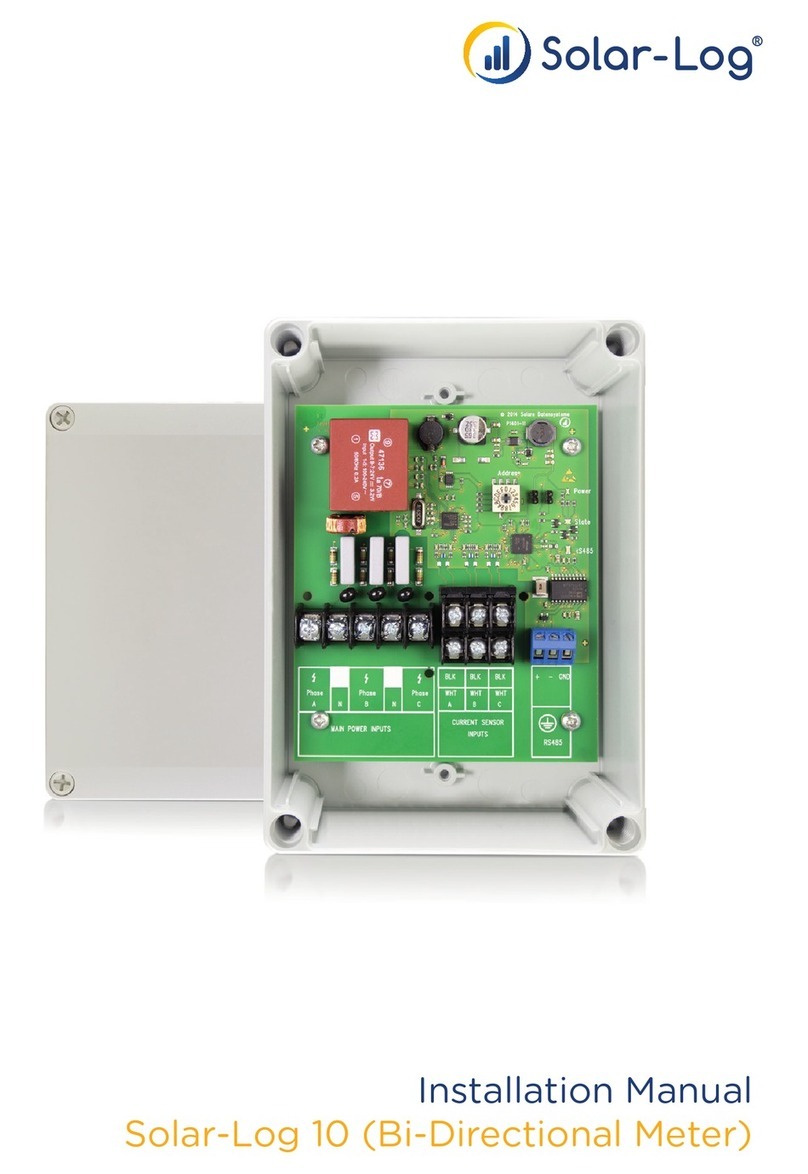
Solar Data Systems
Solar Data Systems Solar-Log 10 installation manual
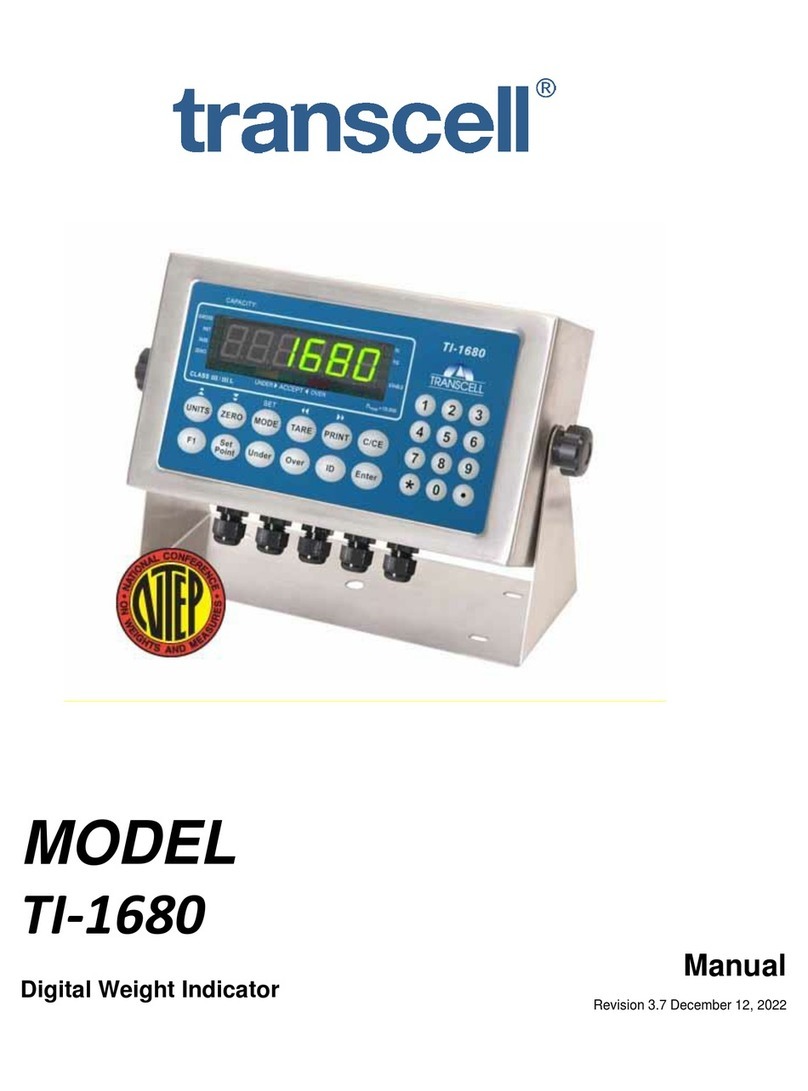
Transcell Technology
Transcell Technology TI-1680 manual
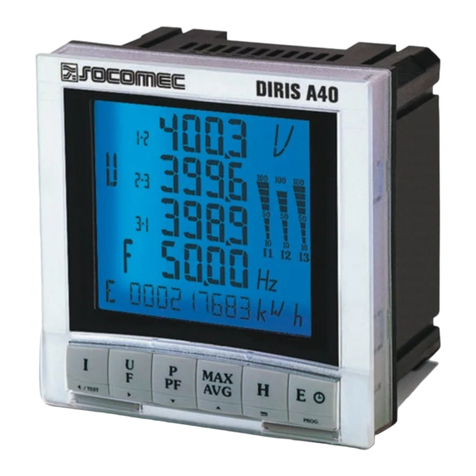
socomec
socomec DIRIS A40 operating instructions
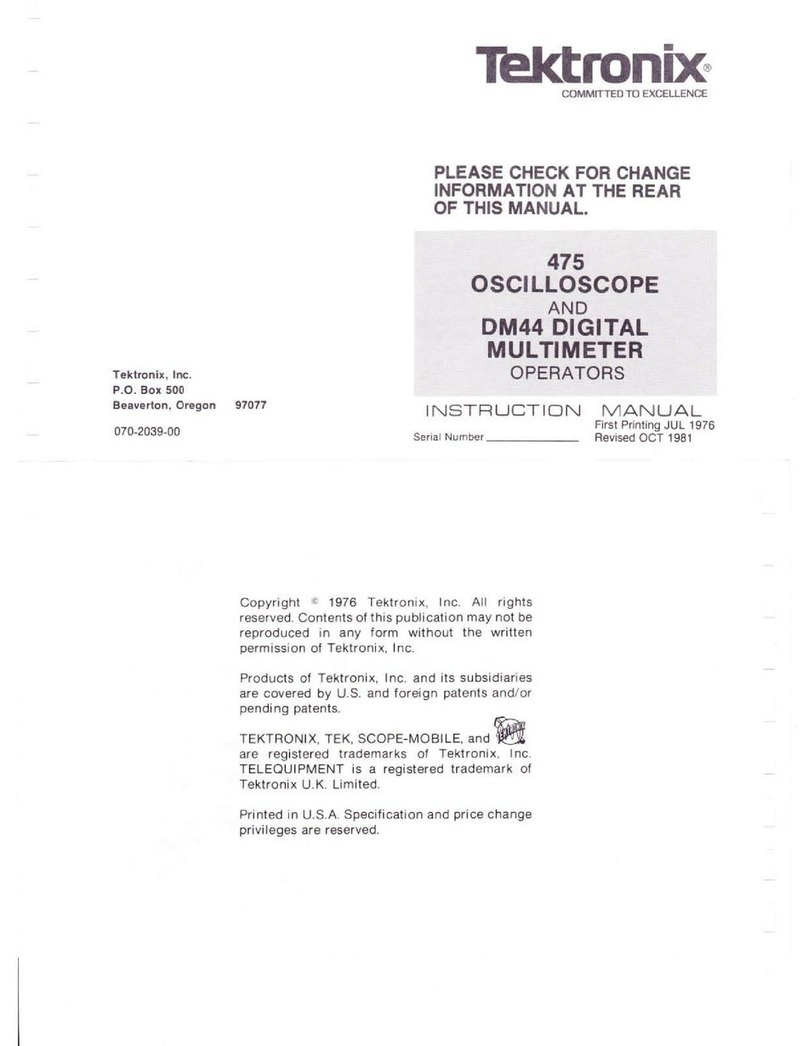
Tektronix
Tektronix 475 instruction manual
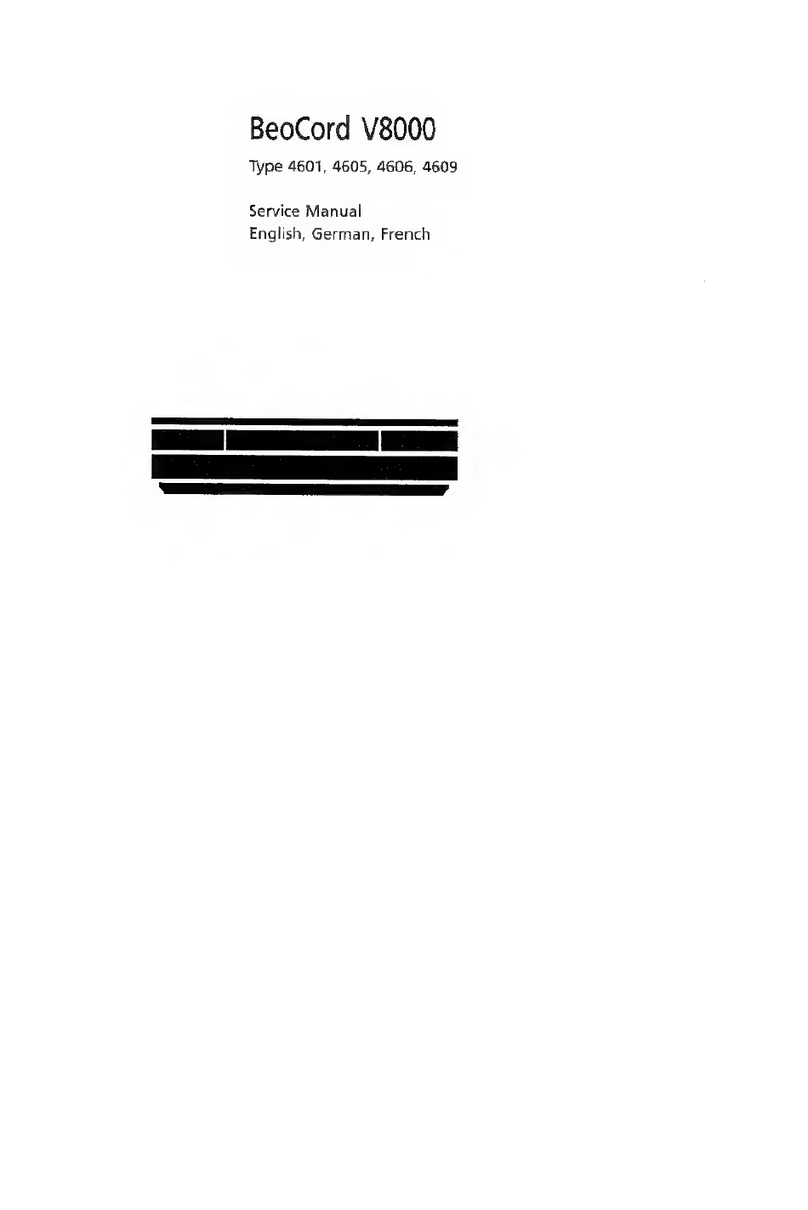
Bang-Olufsen
Bang-Olufsen BeoCord V8000 Service manual

Beseler
Beseler PM2L instruction manual

Clearaudio
Clearaudio Weight Watcher user manual
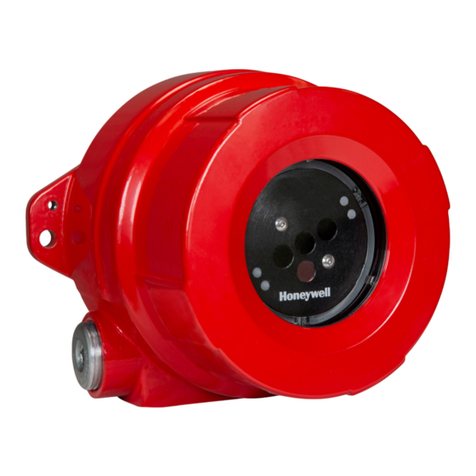
Honeywell
Honeywell FS24X Plus user manual

EXTOL PREMIUM
EXTOL PREMIUM 8823301 Translation of original user's manual
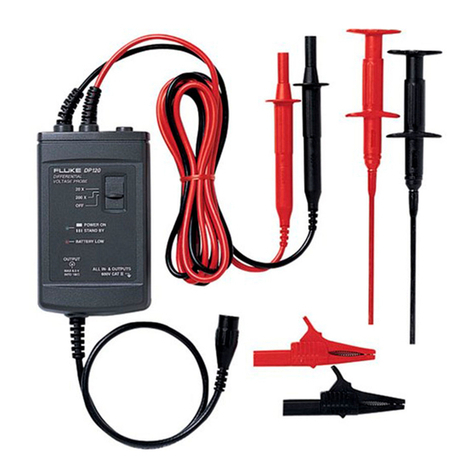
Fluke
Fluke DP120 instruction sheet

TelePost Incorporated
TelePost Incorporated LP-200 Assembly instructions
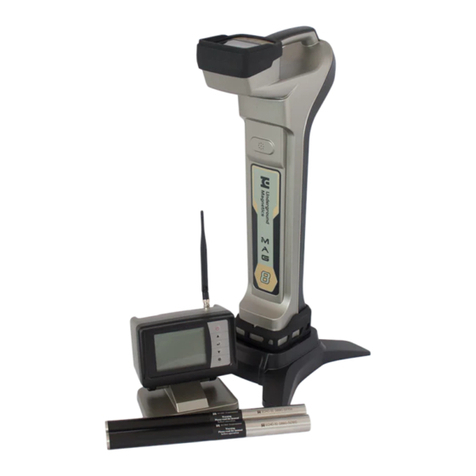
Underground Magnetics
Underground Magnetics Mag System manual
